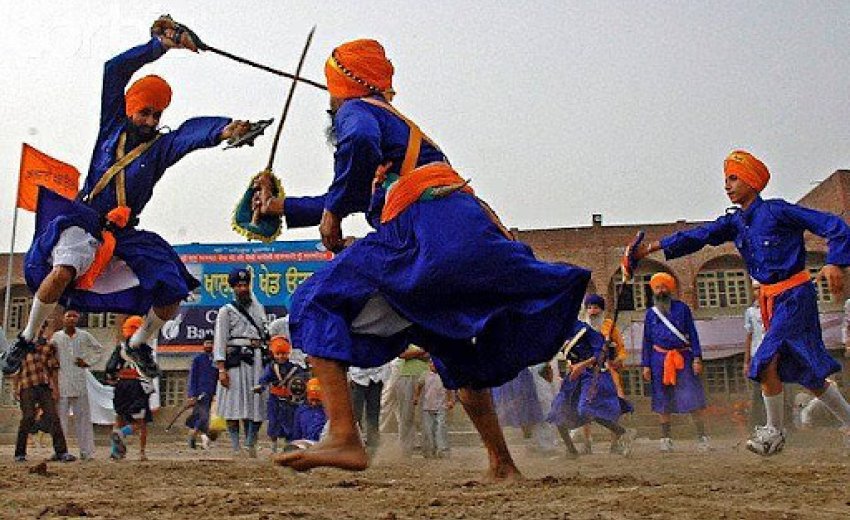Guru Ram Das established the Mal Akhara, a martial arts school in Amritsar.
Guru Ram Das established the Mal Akhara, a martial arts school in Amritsar. He presented a turban of victory to Guru Arjan Dev, who defeated a renowned wrestler named Maskeen in a significant match. This martial arts tradition was passed down from Guru Angad Dev, who had learned it from Guru Nanak. References to this can be found in the Siri Guru Granth Sahib and early Sikh history. The Sixth Master then combined Bhakti (spiritual devotion) with Shakti (physical empowerment). This union of miri-piri is a fundamental concept in Sikh Dharma.
During the Guru's era, people had become weak and disempowered. The Guru aimed to instil courage in the Sangat and his new creation, the Khalsa. Yogi Bhajan often referred to Gatka as 'Adi-Shakti Yoga,' describing it as a martial art that serves as a yoga of self-empowerment. Gatka is more than just a martial art; it encompasses a complete way of being, thinking, and living. It encourages appreciating the temporal nature of reality and living a life filled with creativity, beauty, and joy. This approach enables one to face death with courage by following the right type of life or Dharma, known as rahit maryada. While Gatka is a martial art, it is also a spiritual practice aimed at bringing balance to one's being. It was employed in historical Sikh wars and has been thoroughly tested in battle when there was a need to defend the dharma.
Rhythmic Gatka movements
Observers of Gatka displays are often captivated by the rhythmic movements. The sword rotates rapidly in smooth circles matching the drum's beat, while swords and shields clash. Fast ḍhol or drum rhythms echo, and jaikāre (war cries) receive enthusiastic applause from both the martial artists and the Sangat.
In contemporary Sikh circles, the term Gatka is commonly used to encompass all aspects of Sikh martial arts. However, historical sources generally refer to the art as Shastravidiā, or the 'Science of Weapons.' Gatka is actually just one component of this martial art system. Shastravidiā includes several other elements: unarmed combat, iron fist fighting, wrestling, stick/club fighting (Gatka), weapon fighting, and missile fighting.
Traditional scholars have noted the distinction between Gatka performances and Shastravidiā. They describe one as an exhibition art and the other as the deadly practical application, or Jhaṭkā-Gatkā. However, most modern Gatka has evolved into a form of exhibitionism.
The Basics of Gatka
The fundamental fitness regimen includes a nutritious diet and physical exercises. These exercises encompass Sun salutations, Indian press-ups, and squats. Gatka, a martial art form, is primarily based on various paitarās and asanas, which are postures that coordinate the entire body and weapons in unison.
The foundational form is the Mūl paitarā, a simple four-step pattern that serves as the basis for all other forms. This movement requires equal and simultaneous use of both hands, promoting ambidexterity. It is designed as a balance and coordination exercise that should be practiced repeatedly.
Other paitarās are inspired by animals such as the tiger, monkey, bull, snake, and eagle. These forms can also incorporate weapons. After the Ardās (a Sikh prayer), warriors show respect to their weapons by bowing and saluting them, either while approaching or circling the arms.
Specific mantras from the Dasam Granth Sahib are recited during practice. These include the Shastra Nām Mālā, Tribhaṅgī Chhaṅd, Bhagautī Astora, and Chaṇḍī dī Vār. Warriors also use war cries such as "Sat Sirī Akāl" and "Gurbār Akāl."
Before engaging in sparring, both participants must perform the fatehnāmā. This ritual salute involves crossing and striking each other's weapons twice.
*Based on an article by Dr. Kamalroop Singh, published in sikhsandseekers.org on 30th July 2015
